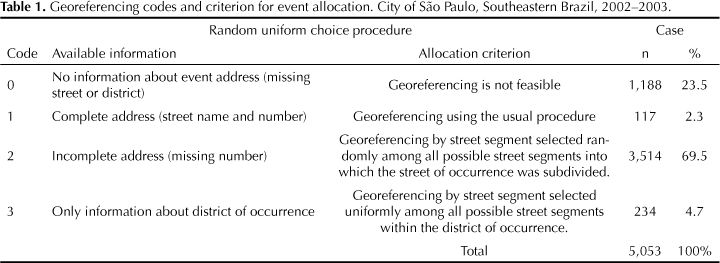OBJECTIVE: To estimate the spatial intensity of urban violence events using wavelet-based methods and emergency room data. METHODS: Information on victims attended at the emergency room of a public hospital in the city of São Paulo, Southeastern Brazil, from January 1, 2002 to January 11, 2003 were obtained from hospital records. The spatial distribution of 3,540 events was recorded and a uniform random procedure was used to allocate records with incomplete addresses. Point processes and wavelet analysis technique were used to estimate the spatial intensity, defined as the expected number of events by unit area. RESULTS: Of all georeferenced points, 59% were accidents and 40% were assaults. There is a non-homogeneous spatial distribution of the events with high concentration in two districts and three large avenues in the southern area of the city of São Paulo. CONCLUSIONS: Hospital records combined with methodological tools to estimate intensity of events are useful to study urban violence. The wavelet analysis is useful in the computation of the expected number of events and their respective confidence bands for any sub-region and, consequently, in the specification of risk estimates that could be used in decision-making processes for public policies.
Violence; Urban Zones; Medical Records; Geographic Information Systems; Statistical Methods and Procedures; Intensity of point processes













